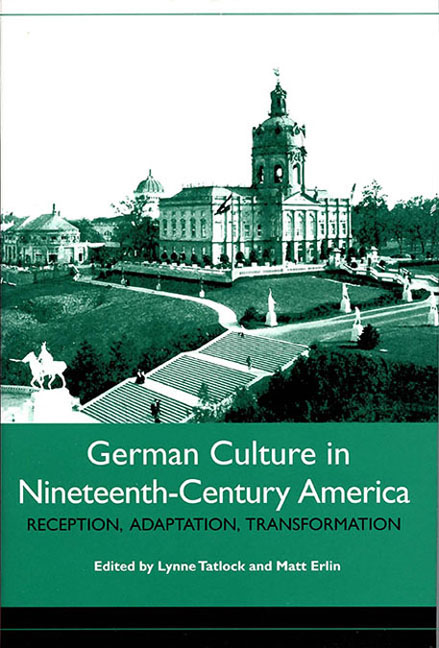Book contents
- Frontmatter
- Contents
- List of Illustrations
- Acknowledgments
- Introduction
- 1 Cultural Politics at the Turn of the Twentieth Century
- 2 In Pursuit of Intellectual Culture
- Absolute Speculation: The St. Louis Hegelians and the Question of American National Identity
- Reading Alexander von Humboldt: Cosmopolitan Naturalist with an American Spirit
- Nietzsche: Socialist, Anarchist, Feminist
- 3 Translation American Style
- 4 Immigration and Naturalization Acts
- Contributors
- Index
Reading Alexander von Humboldt: Cosmopolitan Naturalist with an American Spirit
from 2 - In Pursuit of Intellectual Culture
Published online by Cambridge University Press: 13 April 2017
- Frontmatter
- Contents
- List of Illustrations
- Acknowledgments
- Introduction
- 1 Cultural Politics at the Turn of the Twentieth Century
- 2 In Pursuit of Intellectual Culture
- Absolute Speculation: The St. Louis Hegelians and the Question of American National Identity
- Reading Alexander von Humboldt: Cosmopolitan Naturalist with an American Spirit
- Nietzsche: Socialist, Anarchist, Feminist
- 3 Translation American Style
- 4 Immigration and Naturalization Acts
- Contributors
- Index
Summary
IT WAS TWO HUNDRED years ago that the great Prussian scientist, explorer, and thinker Alexander von Humboldt (1769–1859) came to the United States on his way back to Europe after his extensive travels in South and North America. That brief visit to the United States in 1804 (from May to June) marked only the beginning of an intense and reciprocal relationship between Humboldt and many Americans and the beginning of an extensive reception of the man and his work in the United States. Given the breadth of this reception, Humboldt is an important figure to include in discussions of German-American cultural transfer in the nineteenth century. But, as I hope to demonstrate below, his relationship to the United States can be viewed as a specific kind of cultural transfer, one that introduces some new questions concerning what cultural transfer is and how it functions.
The notion of cultural transfer, like transfer in any context, presumes three things: (1) that something is being transferred, (2) that there is a point of departure for that transfer, and (3) that there is a point of arrival. This is true, as we know, of the long-standing tradition of work on how one culture influences another or, to put it inversely, how one culture might appropriate elements of another culture. It is implicit in notions of reception or cultural influence, such as that implied by the phrase the “Americanization” of German culture. The innovation inspired by the work of Michel Espagne and Michael Werner has been to rethink cultural transfer as something that takes place not only in one direction (that is, with a thing that is transferred from one place to another), but rather to conceive of “cultural transfer” as happening in two or even several directions. Moreover, Espagne and Werner have thought of this mutual transfer as happening not sequentially, but at the same time or, at least, if not simultaneously, then frequently and repeatedly, such that the notion that either culture ever remains “the same” in the process of the transfer is challenged. One example of this is the cultural exchange that Espagne and Mathias Middell have studied between Saxony and France in the eighteenth and nineteenth centuries.
- Type
- Chapter
- Information
- German Culture in Nineteenth-Century AmericaReception, Adaptation, Transformation, pp. 107 - 128Publisher: Boydell & BrewerPrint publication year: 2005



